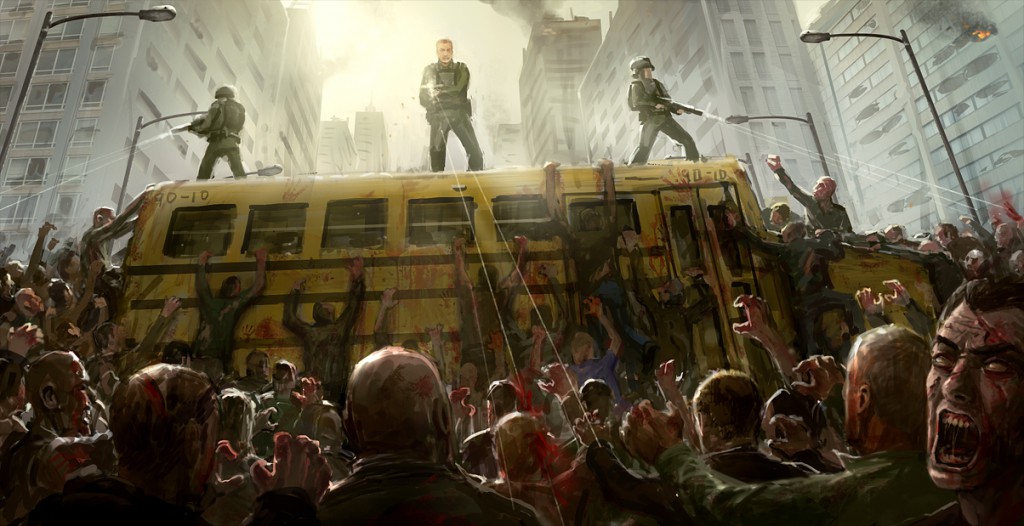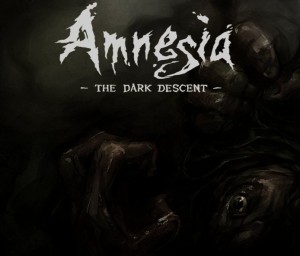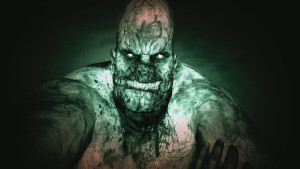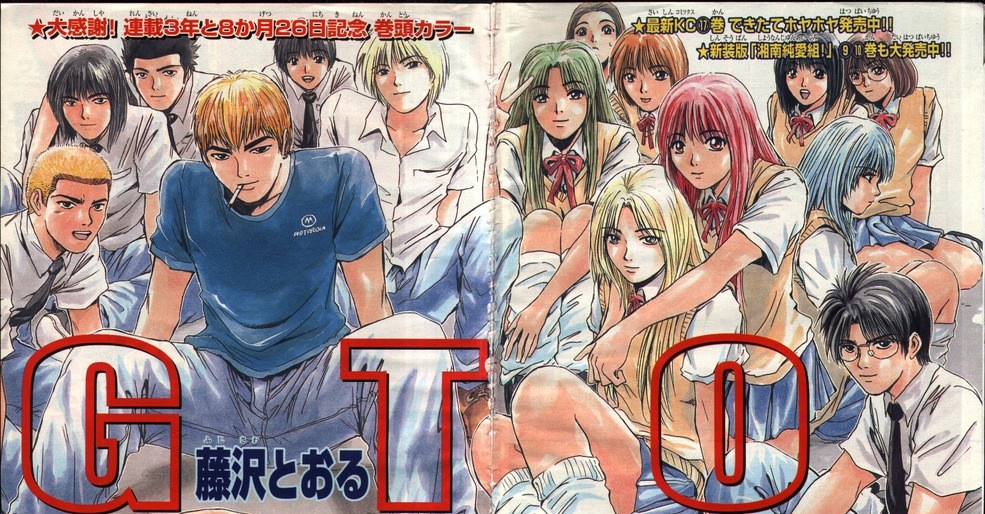Horror has not fared well in twentieth century cinema. Aside from surprise hits like Paranormal Activity and unintended comedic oddities like The Human Centipede, there has been little evolution on the big screen. Gore has replaced the fine tuned artistry that directors like Hitchcock and Craven worked to create, leaving words like miserable, gruesome, and slaughter, to replace their nuanced counterpart, suspense. The industry now seems to focus on the disembowelment and murder of nameless characters in an absent plot. Hollywood seems content to overwrite fear with shock and awe, and all that seems to remain is soulless, scare-free garbage. Which raises the question: “Where can I find quality horror?” As a total nerd I could not be happier to answer, video games.
Survival horror, as the genre is called in the video game industry, has always held a special place in the heart of fans. For a period of time in the late nineties horror was one of the great genres in games. Resident Evil, one of gaming’s biggest franchises originally published in 1996, is famous for making virus infected zombies scary. Countless titles rode Resident Evil’s wave of popularity and what resulted was suspense-filled abundance. One of my greatest joys as a child was stalking zombies and other virus-fueled horrors. My nights were spent huddled around the fading light of an old projection T.V. with friends, screaming at every small bit of noise or movement. Our household struggled to keep a stock of Playstation controllers because of how often we threw them in our fear.
Then something tragic happened, the games stopped coming, and worse, the ideas stopped coming too. It was like the first few hits used up all of the industry’s creative fuel and what was left was the odd cult classic or sequel. Even Resident Evil evolved to stay alive: it sped up its game play and focused more on combat. The days of slow, terrifying gameplay seemed a relic of the past and what sold was games with action. Horror games began to feature real time events and upgradable rocket launchers and maniacs with chainsaws. Resident Evil 4 is famous for its dynamic weapon system and quick, fluid combat. Compared to the ammo starved streets of Resident Evil the newer generation felt more like Halo or Call of Duty. While the fun grew and the gameplay never got stale, the suspense disappeared entirely. The mindset switched from hunted to hunter and the changes that came with it threatened to redefine the genre. For a time it seemed like horror was lost entirely and what was left was an amalgamation of monster of the week mixed with Rambo style action.
Then in 2010 a small studio by the name of Frictional Games published Amnesia: The Dark Descent, a game so terrifying it revolutionized the dying genre. Gone were gun-slinging protagonists and in their place came a new and glorious thing: a weak, unapologetically frightened character named Daniel, devoid of any will or way to fight back and clinging to the edge of sanity. While unarmed leads have been done before to great effect, never has it been so seamlessly integrated into the machine. Amnesia fires on all cylinders, from sound design to art direction, everything works cohesively to frighten you. I have never played a game where I was so powerless and scared. It was pure horror at its finest and it singlehandedly lifted horror back into popularity.
Over the past five years we have seen a renaissance of terror take place in the video game industry. Everyone from AAA giants like Sony to small time indie dev’s are working on some kind of survival horror. And the cool thing is that most of these projects are all fundamentally different. Amnesia didn’t merely create a cookie cutter mold for studios to copy and paste. Instead it showed that it is okay to take a risk, to develop an experience rather than trying create a traditional game. Compared to movies, video games offer a more immersive form of expression. Instead of watching characters on a screen, or reading them from a page, you inhabit them. Amnesia tapped into this when they created Daniel and his descent into darkness. On his journey he proved that games have the potential to reach the player in ways even the silver screen has trouble doing. By using how we play and experience games against us, the developers are able to reach us on a deeper more frightening level.
Thankfully this nuance has caught on and new horror games have started to take note. The recently released Alien: Isolation by Sega immerses the player in one of the most iconic and frightening cinematic mythologies ever created, Ridly Scott’s Alien. Much like Amnesia, the game revolves around the player running for their life. You are hunted, and not by just any old monster under the bed, but by fully-grown Xenomorphs. Alien: Isolation has a horrifying knack for finding the scariest moments in the movies and finding inspiration from them in game. There are facehuggers, chestbursters, even chase scenes that unfold entirely in the vents. By applying the best parts of Amnesia to one of the most beloved and atmospheric sci-fi movies ever created you create more than a game, memory that will last with the gamer for a lifetime.
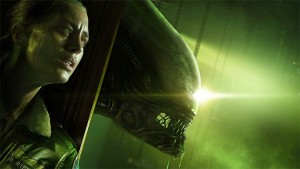
Until recently it seemed that developers forgot they could take the same poignant storytelling that takes place in dramatic games and movies and apply it to horror in a way that elevates the material. By doing this they take the thier games from what might have been comparable to a digital haunted house, to a full-fledged thematic experience. A world where the player gets to feel what it’s like to be Sigourney Weaver running from an alien with acid blood.
In the case of Red Barrels’ Outlast, the player is put inside the shoes of a brave investigative reporter who has uncovered a story at an insane asylum named Mount Massive. Unlike Alien: Isolation where stealth and caution is key, Outlast encourages the character to run. The halls are filled with unhinged, and sometimes naked, inmates and what results is a mad dash through hell. Red Barrels utilizes sound design and brilliant voice acting to ensnare the player in their dark and twisted vision. Outlast taps into a kind of adrenaline injected terror. By forcing the player to desperately flee for survival Red Barrels recreates that flight or fight rush of fear. What results is once again more than merely game. It’s an experience, a run for your life simulator that feels and moves with the kind of life-like authenticity that movies and books often lack. Small design features, like the ability to turn your head to look behind you, play off the fact that the player is moving the controller. You are the reporter and behind you lurks a big pig-faced man with a cleaver- a fact you know for certain given that you turned around to look. It is these kinds of innovations that pave the way for a truly memorable experience.
These moments represent a clear and intended evolution of the genre. A shift from players playing horror games to gamers experiencing them. Unlike the action oriented gameplay of Resident Evil 4 these games don’t seek mechanical perfection. For games like Amnesia and Outlast the end goal is entirely different. They are not looking for the player to love the way their character jumps or shoots or runs. They want the player to be terrified. For that mechanics are a means to an entirely different end, the creation of a cinematic experience. Interestingly enough this trend in design is not limited to horror. From The Uncharted series to the The Last of Us, a wide variety of games are beginning to understand the power of taking the player and immersing them in a story or world. Games by their nature have the power to transport and transcend reality. Before this point in history one of the only ways of accomplishing either of these things was through gameplay. Horror games have begun to change that.
If you, like me, are a fan of horror than there is no better time than the present to get into video games. The currently available flight of games represents a wholly unique and interactive horror experience. Great things are taking place in the industry and the limits of a studio’s ability to transport a player, change with every passing moment. Horror has a genre is slowly beginning to take root and rise again to prominence. All you need is a controller to experience it.

